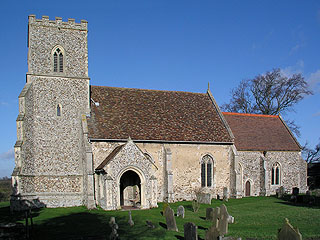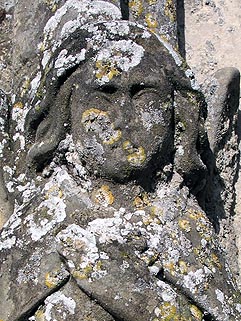All Saints sits inside the earthworks of the eponymous castle. William the Conqueror gave this area to Aubrey de Vere, first Norman Earl of Oxford and progenitor of a family that remained powerful in local (and national) politics for the next 500 years. De Vere built a large keep on the high ground, with good views towards Essex in the south.
The castle grew to be very large, with the outer defences enclosing both the church and the village. The village has now migrated to the north, and the castle building itself has long disappeared, presumably plundered for its stone. In the 16th century it was sold to Thomas Skinner, a London merchant, and then passed through various hands before being given to Charterhouse School in 1611. A grand farmhouse now stands on the site.
The earthworks remain, and are quite impressive, as is the outer ditch. The solitude and sense of being the last remainder of a powerful stronghold lends drama to the church, gazing out over the fields.
This is an empty part of the county, full of big fields and winding unmetalled roads. We had glimpsed All Saints from quite a way off, and were filled with excitement. Unfortunately, the church is locked, and there are no keyholders listed.
The outside doesn't promise much - it's a small, aisleless building that has been very heavily restored. The porch is Victorian, as is the west window ('blatantly' so, according to Pevsner). The doorway inside is 15th century, but a peek inside revealed that there was little to see inside. It looks like there's some old glass in the windows, though, and Pevsner does mention a surviving dado rail.
If we're passing this way again we may see if there's a key at the farmhouse.
All Saints was locked, without any keyholders listed.

